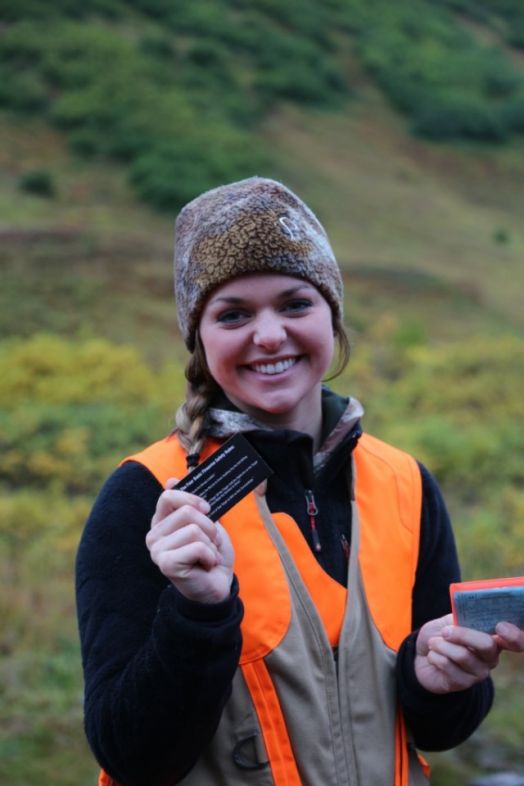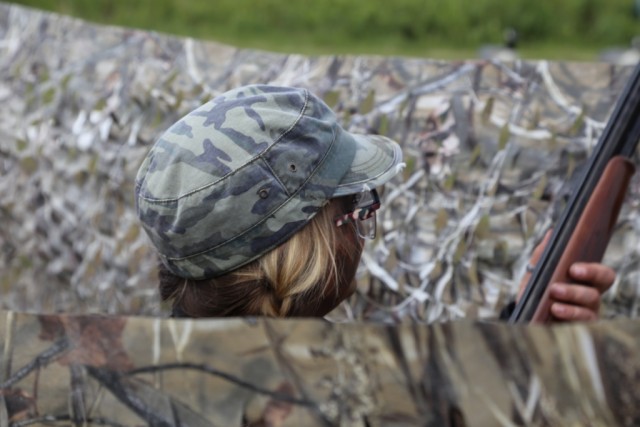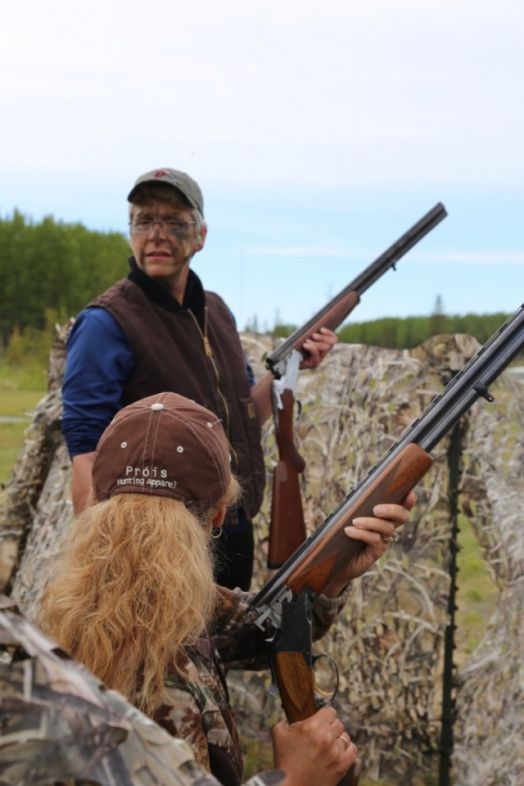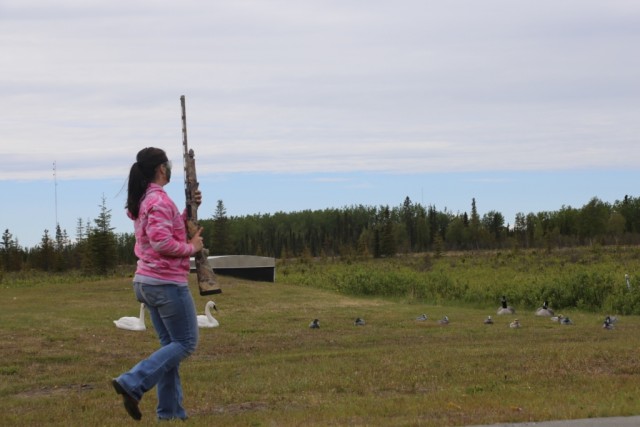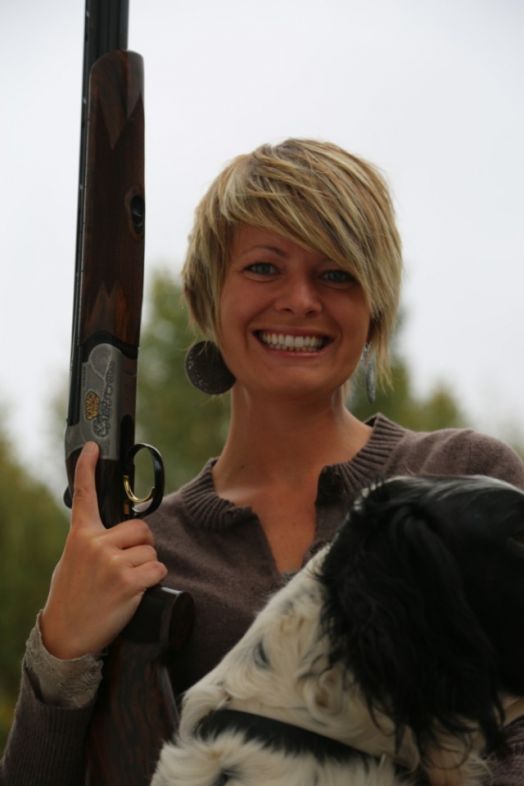By Christine Cunninghamm, Women’s Outdoor News
It was not without some hesitation that I mounted my trap gun and pointed it toward the mirror. I had it on good advice that if I were mounting my shotgun correctly, I would see my eye just over the bead. The vanity mirror in my bedroom was an unlikely place to practice, and I hesitated in order to consider the 4 rules of firearm safety. The circumstances and opportunities to use a firearm are always changing – from the gun range to the game fields, but the rules never change. Here are the rules and how to apply them to every situation:
The first of the 4 basic firearms safety rules is “All guns are always loaded.” That doesn’t mean “Always keep your gun loaded,” or insist that all guns are loaded when and if we know they are not. A literal reading of the rule might imply that the first rule is not always true because all guns are not always loaded, but they should be considered as such. The rules are verbatim, or I would add the words act as if all guns are always loaded. Adding these few words removes my distrust of rules that have exceptions, such as “I before E except after C.” (I neither seize nor forfeit my neighbor’s caffeine.)
Always (adverb) 1. every time; on every occasion; without exception
When we handle firearms, we assume they are loaded and treat them accordingly every time we encounter them. Many, if not most, firearms-related accidents come with the statement, “I didn’t think it was loaded.” This rule may be obvious when hunting, but can be forgotten when the gun is removed from the case, handled for a photo, or in the excitement after the shot.
When someone hands me a firearm, I act as if it’s loaded, so I check it. If the person says, “It’s not loaded,” I check it anyway. Not because I don’t take a person’s word or because I’m a type A personality, but because anyone who says a gun isn’t loaded doesn’t know the 4 basic rules and just might have overlooked something else. No exceptions.
Never allow the muzzle to cover anything you are not willing to destroy
The next basic rule of firearms safety builds on the first: “Never allow the muzzle to cover anything you are not willing to destroy” (because all guns are always loaded). The rule makes mounting my gun and pointing it at my mirror verboten. I wouldn’t intend to destroy my mirror. It’s a very nice mirror. The rule acts as a second safety – even with a loaded gun, if the muzzle never covers anything that you don’t intend to destroy, you’re safe.
Never (adverb) 1. not ever; at no time; 2. not at all; absolutely not; 3. to no extent or degree
Muzzle control includes more than just when we “point” a gun. Every time we hold a firearm we should have complete control of the muzzle direction, whether we’re placing it in a vehicle, removing it from a table, or carrying it across the room. As a hunter-education instructor, I tell students that if they allow their muzzle to cover another student, it is automatic grounds for failing the class.
The most dangerous hunts are those in which you are hunting with someone who does not have control of his or her muzzle, such as a hunter who does not use an appropriate field carry. Any method of carrying a firearm while hunting can be dangerous or threatening, depending on the circumstances and the location of other hunters. If your muzzle is pointing at anything (behind, in front or beside) that you don’t intend to destroy, it’s unsettling at best and deadly at worst. I’d rather face a standing grizzly bear than look down the barrel of another person’s gun.
Keep your finger off the trigger until the sights are on the target and you have made the decision to shoot
Those who have experience with guns “index” the trigger finger. My favorite instruction for this rule is “Your finger lives on the receiver; it only visits the trigger.” One of the reasons is that when people are excited, they tend to clench. If your finger is on the trigger when that happens, hopefully the muzzle is in a safe direction.
Off (adverb) 1. away from the place in question; at a distance
One of the first things a photographer friend learned about “shooting” firearms (taking photos that include guns) was never to allow a subject to place his or her finger on the trigger. As an image, a straight finger contradicts the portraiture rule that insists that “if it bends, bend it” – referring to wrists, elbows and knees. It does not apply to index fingers where guns are concerned.
Movies and other media have contributed to the bad habit of people picking up a firearm and immediately placing a finger on the trigger. Whether it makes for better cinema or images, it has no place in the real world of firearms. The reflex action of the finger to surprise could easily make a gun go off that would, if following the other rules, be safe.
A visit to a gun counter proves that this fundamental rule is still broken, even by those looking to purchase a firearm. If you watch trigger fingers, which my uncle calls “the booger hook,” you can easily pick out those who lack experience. Note: The words “pick out” have nothing to do with the “booger hook” reference.
Be sure of your target, as well as your surroundings
Sure (adjective) 1. confident in what one knows; having no doubt
This rule seems simple, but it has a meaning forged in accidents. It’s as simple as realizing that if you’re on the first floor of a two-story building, you shouldn’t point your gun toward the ceiling. When hunter-safety instructors advise against shooting a silhouetted animal, it is because the surroundings are unknown. There was an incident close to my home town in which a hunter shot a moose and was not aware that, during the stalk, his daughter located herself behind the moose. A bullet continues on after the target. Every bullet, as my favorite instructor says, “has your name on it.”
